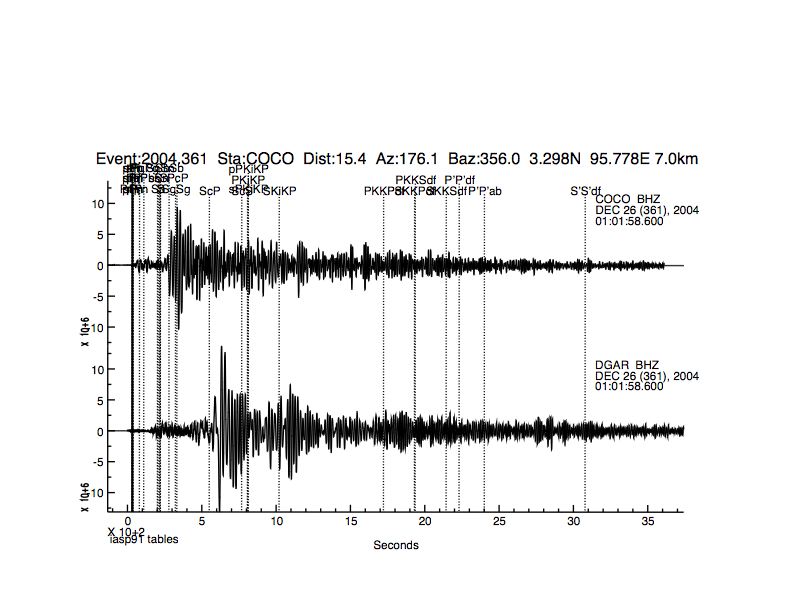Boxing Day 2004 magnitude 9 earthquake
|
This is the largest earthquake to have happened in the past 40 years and one
causing great damage to areas around the Indian Ocean basin -- damage only just
beginning to be known in these days subsequent to the event.
The earthquake appears to have ruptured a few-hundred-kilometer-long underwater
segment of the plate boundary between the Indian and the Eurasian plates between
the northern end of Sumatra toward the Andaman Islands.
Based on preliminary analyses of the data, the rupture lasted for almost
three minutes due to the length of the fault.
The seismograms reflect this characteristic of the rupture.
There are two shown from seismic observatories located on two islands in the
Indian Ocean: Cocos Island and Diego Garcia.
The P-wave arrives first at Cocos island (top), and later at Diego Garcia.
Each seismogram begins with a very slowly growing P-wave arrival over the
first few minutes of the event.
Then the larger amplitude S-waves arrive, which dominate the rest of the
traces.
|
 |
These seismograms are extremely long: they represent an hour of
elapsed time, yet are compressed into shorter stretches of audible time so that
you can hear the low frequency energy emitted by this enormous earthquake.
They start about 3 minutes after the earthquake.
The frequencies are shifted upwards about 2560 times by the processing methods
used here, and the seismograms shortened in time by a factor of 100.
The Cocos Island seismogram (top) plays in your left ear and the Diego Garcia
seismogram (bottom) plays in your right.
Diego Garcia is around 1000 km farther from the epicenter than Cocos Island,
so you appear to hear a wave passing from left to right due to the stereo
effect.
If you want to hear the low-frequency content of the signals better without
distortion, there's an
alternative audio track to listen to.
Use headphones to listen to this one, which lets you hear the low
frequency content of the seismograms better.
The rumbling wanes to some higher frequency noises sounding like the whip of
a fly-fishing rod being cast.
These are high-frequency waves emitted downward from the earthquake that reflect
off the far side of the Earth, arriving much later than the P- or S-waves
travelling directly from the quake to the seismometers.

